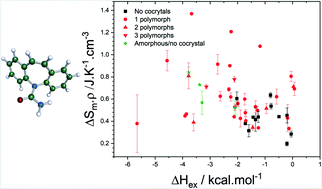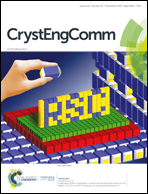Affinity prediction computations and mechanosynthesis of carbamazepine based cocrystals†
Abstract
Affinity prediction computations based on the COSMO-RS approach of the active pharmaceutical ingredient (API) carbamazepine has been performed with 75 coformers. A selection of coformers and cocrystallization trials by means of mechanosynthesis using liquid assisted grinding has been investigated. Two new cocrystals of carbamazepine with DL-mandelic acid and DL-tartaric acid and one new polymorph with indomethacin have been designed. The affinity prediction computations enabled the calculation of the excess enthalpy ΔHex of the carbamazepine–coformer mixture relative to the pure components. The ability of ΔHex to predict cocrystallization was assessed based on the new experimental results obtained in this study and data available in the literature. It is shown that affinity prediction computation might not be totally sufficient when it comes to the selection of all of the coformers that could cocrystallize with carbamazepine. A combination of the excess enthalpy ΔHex with the fusion entropy of the pure coformer is suggested to be of interest for coformer screening in order to form a multicomponent system with a given API (cocrystal/co-amorphous).

- This article is part of the themed collection: Editor’s Collection: Mechanochemistry


 Please wait while we load your content...
Please wait while we load your content...